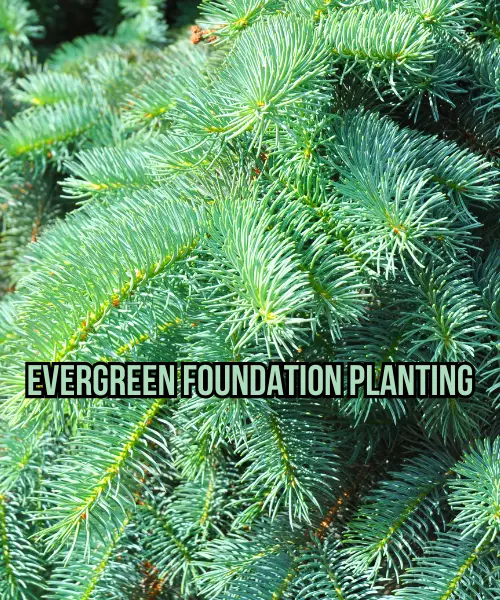Ever been driven by a home in the winter and been struck by how bare and bleak the landscape looks?
Or have you ever admired a house that looks lush and welcoming even when everything else is dormant? The difference often comes down to well-planned foundation plantings that incorporate evergreen shrubs and trees.
Foundation plantings are the plants used around the base of a house or other structure. They serve both a functional and aesthetic purpose.
Functionally, they can help insulate the home, prevent soil erosion, and guide foot traffic. Aesthetically, they tie the vertical lines of the home to the horizontal lines of the landscape, creating a cohesive look.
And evergreens, with their year-round greenery, make them optimal choices for this role.
When choosing evergreen shrubs and trees for foundation plantings, there are a number of considerations:
Cold Hardiness
You will obviously want to pick plants suited to your climate that can withstand winter extremes without sustaining damage. You can look at plant hardiness zone maps and select varieties rated at least one zone colder than your area.
Size at Maturity
Don’t make the mistake of planting shrubs or trees that will quickly outgrow the space. Always consider the plant’s mature height and spread. You may need to do some selective pruning, but you don’t want to fight the plant’s natural size and shape.
Growth Rate
Depending on your timeline, you may want plants that grow quickly to establish a finished look. But faster-growing plants also require more maintenance and pruning over time. Slower growers let you make changes more gradually as needed.
Texture
Having a mix of fine and coarse textures among your evergreens creates visual interest. Fine-textured plants have small leaves or needles and a feathery, smooth appearance while coarse-textured plants are bolder with thick, heavy leaves or needles.
Color
Don’t just default to green! Many evergreens offer colorful foliage in shades of yellow, blue, red, and more that can increase curb appeal throughout the year. Incorporate a range of colors and avoid repetition for a more dynamic look.
With those factors in mind, here are some top evergreen picks to consider for foundation plantings:
Shrubs:
Boxwood
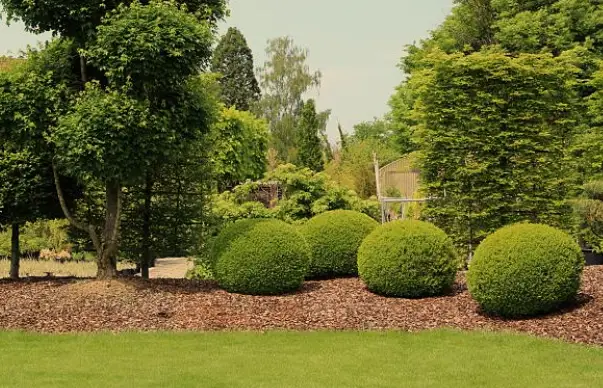
Boxwoods, an old-landscape staple, offer dense foliage in a variety of shapes, from rounded to conical. They’re relatively slow-growers that can be pruned into formal hedges or left untrimmed with their natural mounding form. The most common variety is green, but there are also variegated cultivars.
Yucca
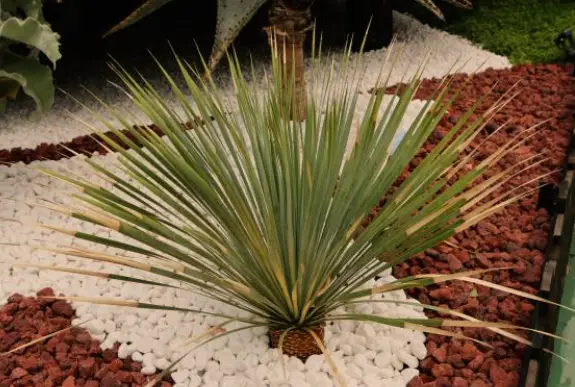
For a bold, architectural look, consider Yucca. These drought-tolerant plants have rigid, sword-shaped leaves that radiate from a central stem, creating a unique texture among foundation plantings. They feature tall spikes of white bell-shaped flowers in summer.
Holly
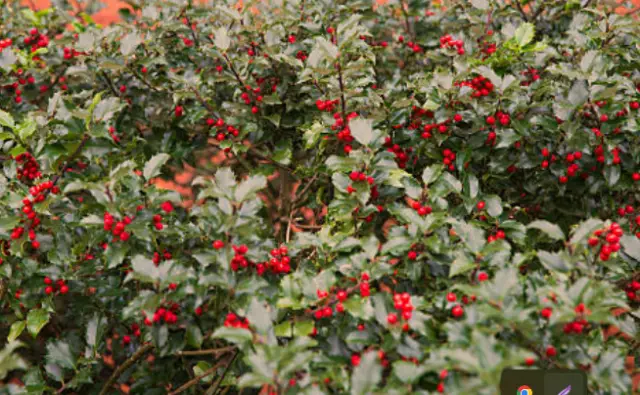
Hollies come in many sizes, from small bushes to towering trees. What unites them is their prickly evergreen foliage (perfect for deterring trespassers) and bright red berries that attract wildlife in winter. Hollies with yellow or variegated foliage make for nice contrast plants.
Juniper
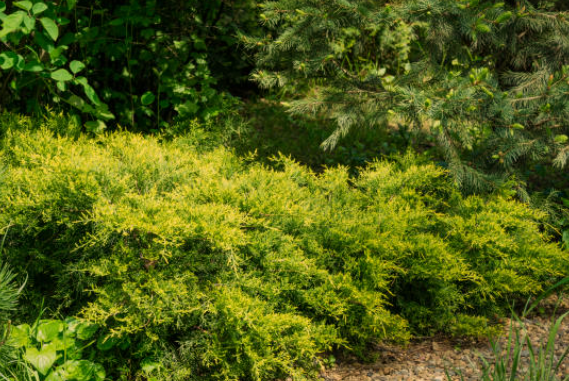
Evergreen Foundation Planting
Among the most adaptable of evergreens, junipers offer a range of interesting colors, shapes, and textures. Ground-hugging varieties make excellent sprawling shrubs, while upright forms can be tightly columnar or pyramidal. Foliage colors include greens, blues, golds, and even purples.
Evergreen Azalea
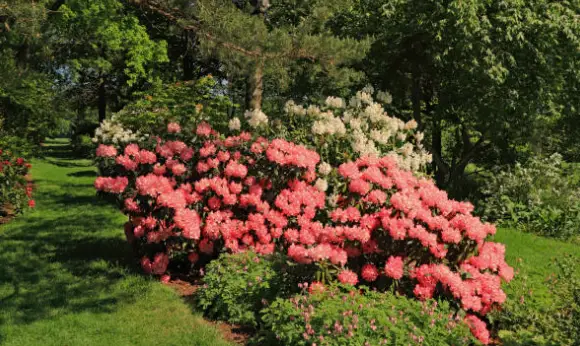
Though azaleas are better known for their brilliant spring blooms, some varieties, like the Encore azaleas, re-bloom throughout the summer. But even after flowering, their small evergreen leaves persist through winter. They make for compact foundation plantings.
Trees:
Arborvitae
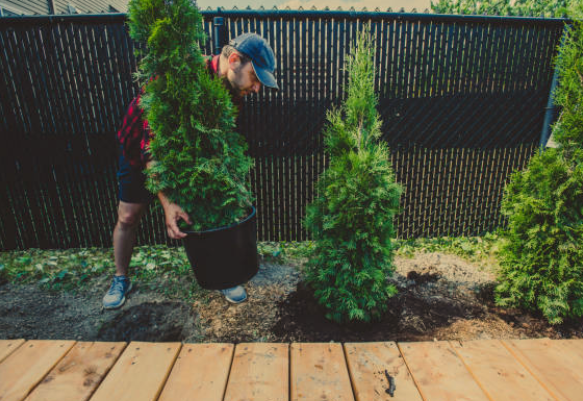
Evergreen Foundation Planting
No evergreen tree is more classic in foundation plantings than arborvitae. These narrowly pyramidal evergreens can create a towering accent or a tightly sheared privacy screen, with foliage in shades of green tinged yellow or gold. Just avoid planting them too close to the home.
Southern Magnolia
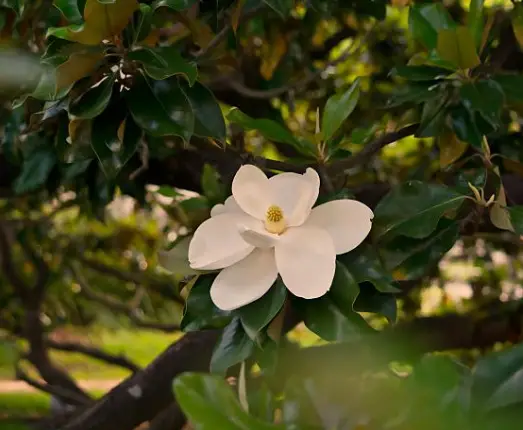
For a bold statement, few evergreens beat the Southern Magnolia. These regal trees sport large, leathery, deep green leaves and big, fragrant white flowers in late spring. They can reach towering heights of 60+ feet but can be trimmed shorter.
Colorado Blue Spruce
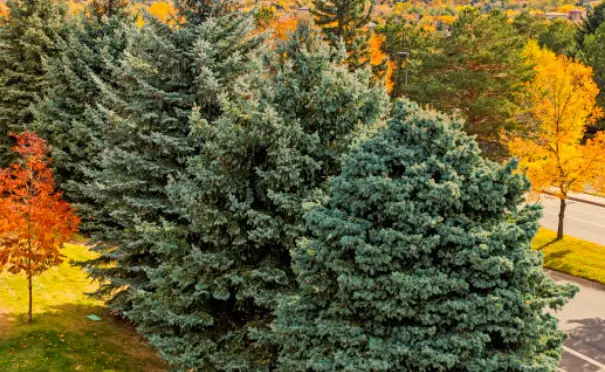
The silvery-blue color of this stately evergreen is truly eye-catching. Colorado Blue Spruces have stiffly pyramidal shapes and work well as striking vertical accents around foundations. Just take care not to plant them too close, as they have wide-spreading branches.
Western Red Cedar
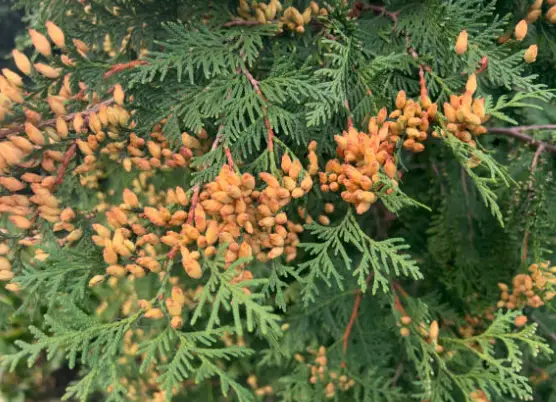
With their feathery, feathery foliage and reddish-brown bark that exfoliates in strips, Western Red Cedars make uniquely textured foundation trees. They grow in tight pyramidal shapes and can be pruned into horizontal shapes as well.
Japanese Cryptomeria
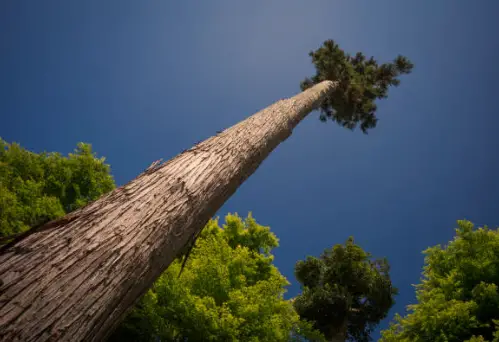
This underused evergreen looks like a cross between a cedar and a pine, with finely textured reddish-brown bark and fluffy green foliage that bronzes in winter. They take well to shearing and make excellent tall hedges or accents.
While these are some stand-out evergreen options for foundation plantings, there are many others to explore based on your needs and personal tastes. Evergreens make excellent four-season anchors for a landscape design.
When planting evergreens, proper placement is key both for aesthetics and health of the plantings. In general, you’ll want to plant shrubs 2–6 feet from the foundation and trees 6–20 feet away, with exact spacing determined by the mature size of each plant. Avoid planting too close, as this can trap moisture against the home and promote wood rot and pest issues.
Triangular plantings at the home’s corners and gentle sweeping curves along longer foundation lines create a cohesive look. Use a mix of heights, but stay lower under windows and taller on blank wall sections. Vary textures and colors, but repeat the same plants along each side for balance.
With these basics and an eye for design, you can create a welcoming, low-maintenance foundation planting using gorgeous evergreens. Perhaps best of all, you’ll have a lush, cozy home to be proud of no matter what the season!
Designing with Evergreens
When designing your foundation plantings with evergreens, there are a few key principles to keep in mind:
Layering
Create a sense of depth by planting in layers rather than just a flat line along the foundation. Use taller evergreen trees as backdrops and anchors at the corners. In front of them, layer medium-sized evergreen shrubs. Finally, ground-hugging, spreading evergreens or perennials can comprise the shortest layer closest to the home. This graduated layering enhances the illusion of distance.
Repetition
While you want to incorporate a mix of plant textures, colors and heights, it’s important to also repeat the same evergreen varieties to create cohesion. Use the same upright evergreen tree at either side of the home’s entrance. Or continue the same evergreen hedge around all visible sides of the house. Just avoid making it look too regimented.
Asymmetry
Rather than mirroring your plantings in too formal a way, introduce some asymmetry for a more naturally balanced look. Use odd-numbers of plants and cluster them in informal drifts. Allow taller plants to be offset rather than directly centered. Asymmetry adds visual interest.
Negative Space
Don’t completely cover the foundation from view or allow plants to engulf the home. Ensure you leave portions visible, creating highlights (see below) as well as negative spaces. This avoids the overgrown look and allows the architectural lines of the home to show through the greenery.
Highlights
Draw attention to the home’s most attractive features, like an arched entrance, a turret, or a beautiful window, through clever plantings. Use evergreens to frame these highlights while leaving them partially visible. Or flank highlights with prominent upright evergreen accents to call even more attention to them.
Contrast
Use contrasting plant forms, colors, and textures to create focal points and break up potentialmonochrome stretches in your foundation plantings. Examples are columns of sky-reaching cylindrical evergreens amid mounds of spreading shrubs, or punches of golden evergreen foliage amongst predominantly green evergreens.
Maintaining Evergreen Foundation Plantings
One of the major benefits of using evergreens in your foundation plantings is their low-maintenance nature. However, they still require some routine care:
Pruning
Most evergreens will need some level of pruning to maintain their desired size and shape. Formal hedges of shrubs like boxwood need frequent shearing during the growing season. Yaupon hollies, junipers and arborvitae benefit from selectively pruning back errant branches to sharpen their outlines annually. Check your specific plant’s needs.
Fertilizing
Established evergreens typically need fertilizing only every few years or per a soil test recommendation. Use a balanced fertilizer and broadcast it over the entire planting area rather than concentrating it just around each plant base. Take care with shallow-rooted varieties like azaleas.
Mulching
Maintain a 2-4-inch layer of mulch over the entire planting bed. This conserves moisture, minimizes weeds, insulates roots, and gives a polished appearance. As existing mulch decomposes, replenish it annually with new wood chips or bark mulch.
Insect/Disease Watch
Routinely inspect your evergreen plantings for any signs of insect infestation or disease. Discolored needles/leaves, premature dropping, or abnormal growth could indicate an issue. Treat early with approved insecticides or fungicides.
De-icing Salts
If planting along a sidewalk, driveway or street, be cautious of de-icing salt damage. Salts can accumulate, causing root damage and needle/leaf burns. Use salt sparingly, plant salt-tolerant types like juniper, and consider burlap barriers.
With these maintenance musts handled, your evergreen foundation plantings will flourish and provide year-round structure and interest to your landscape for decades to come!

